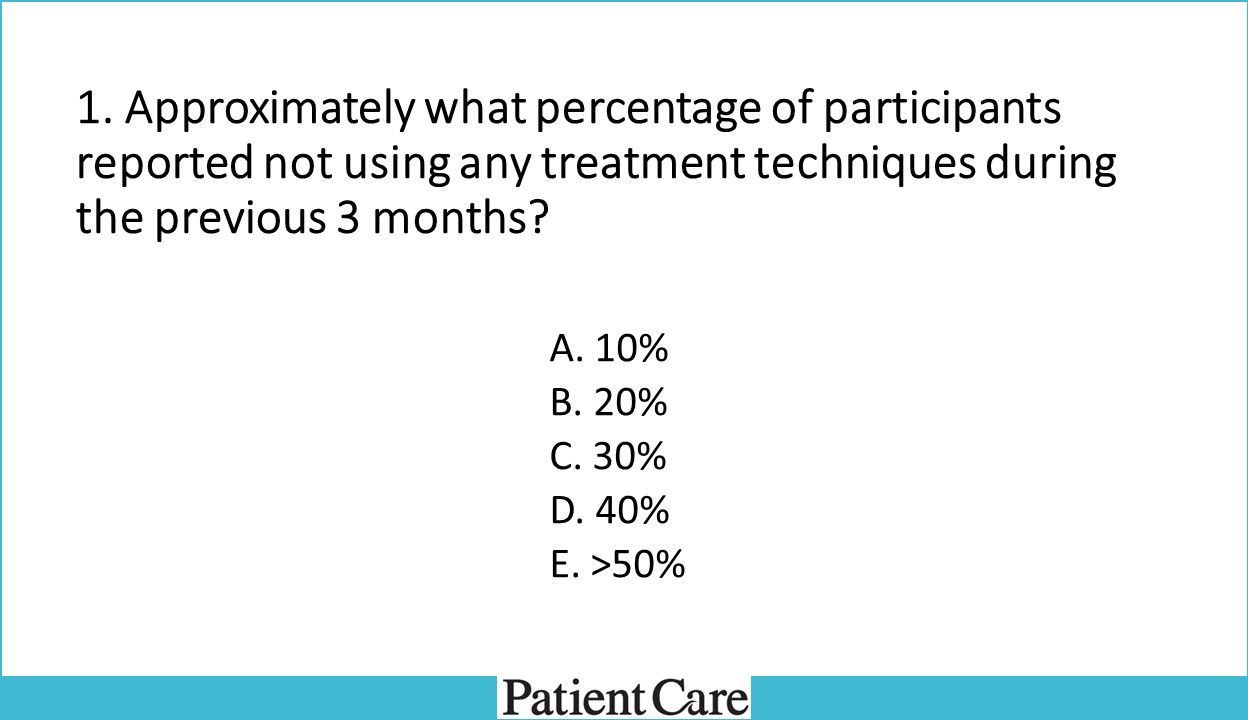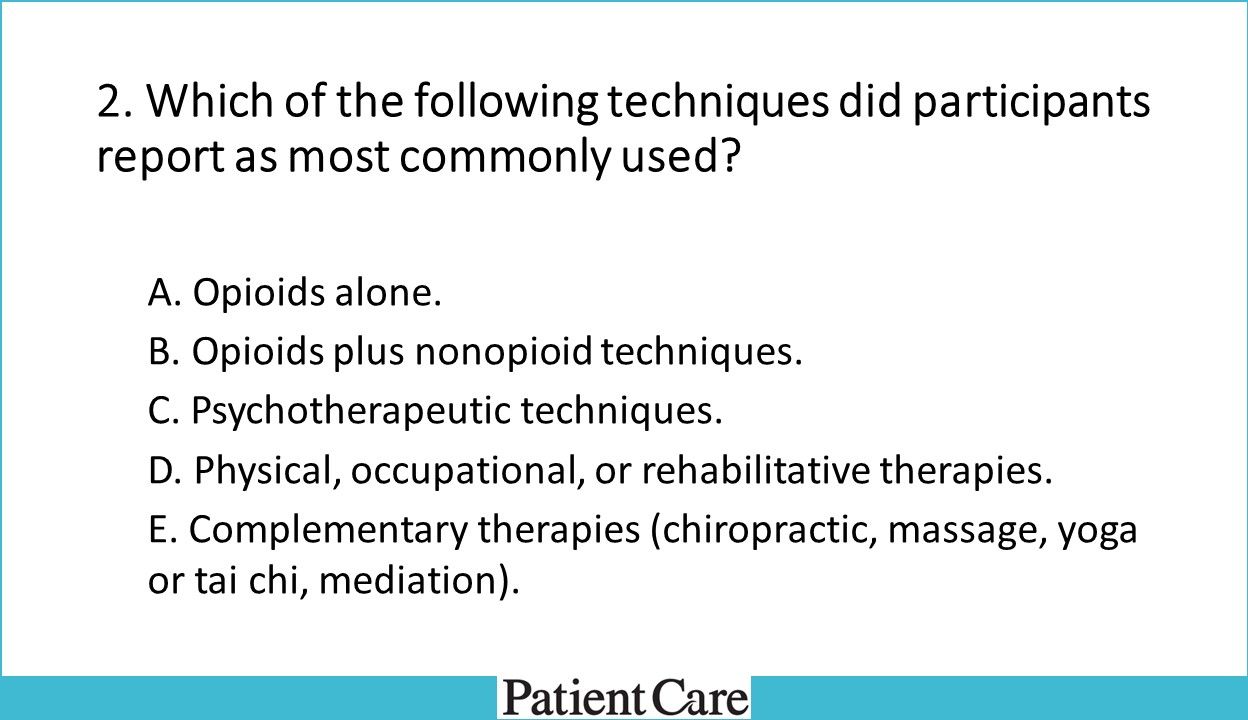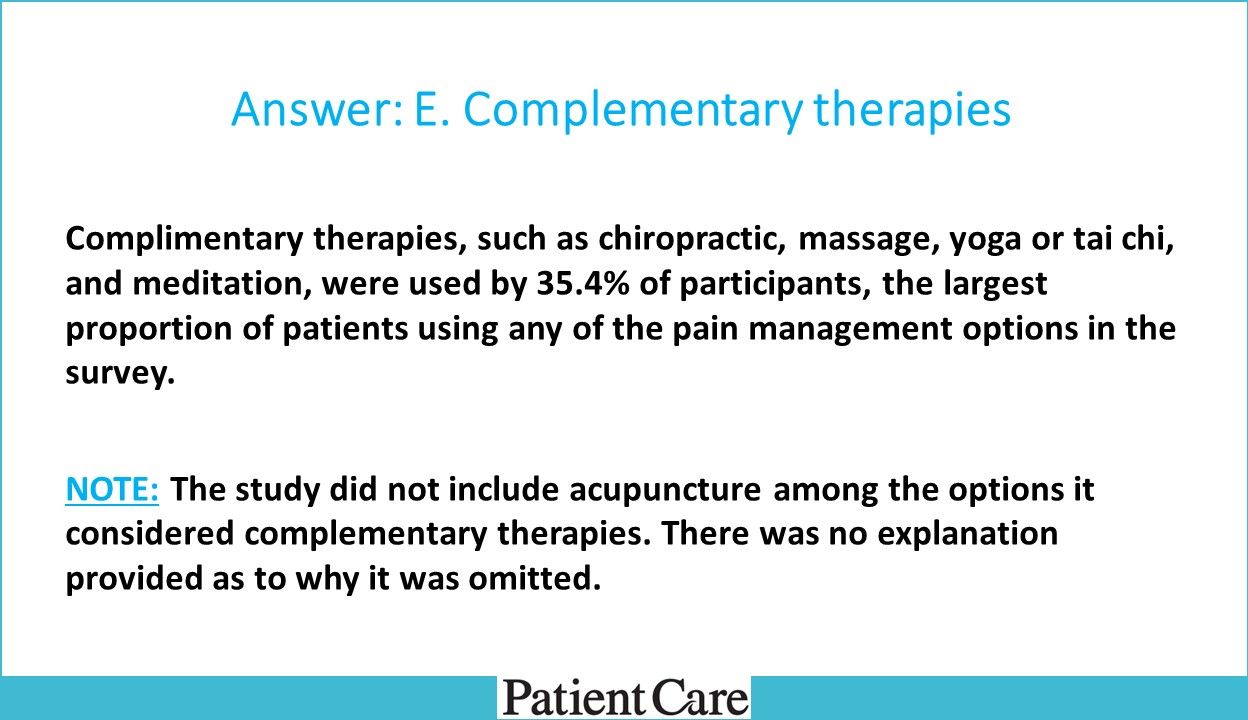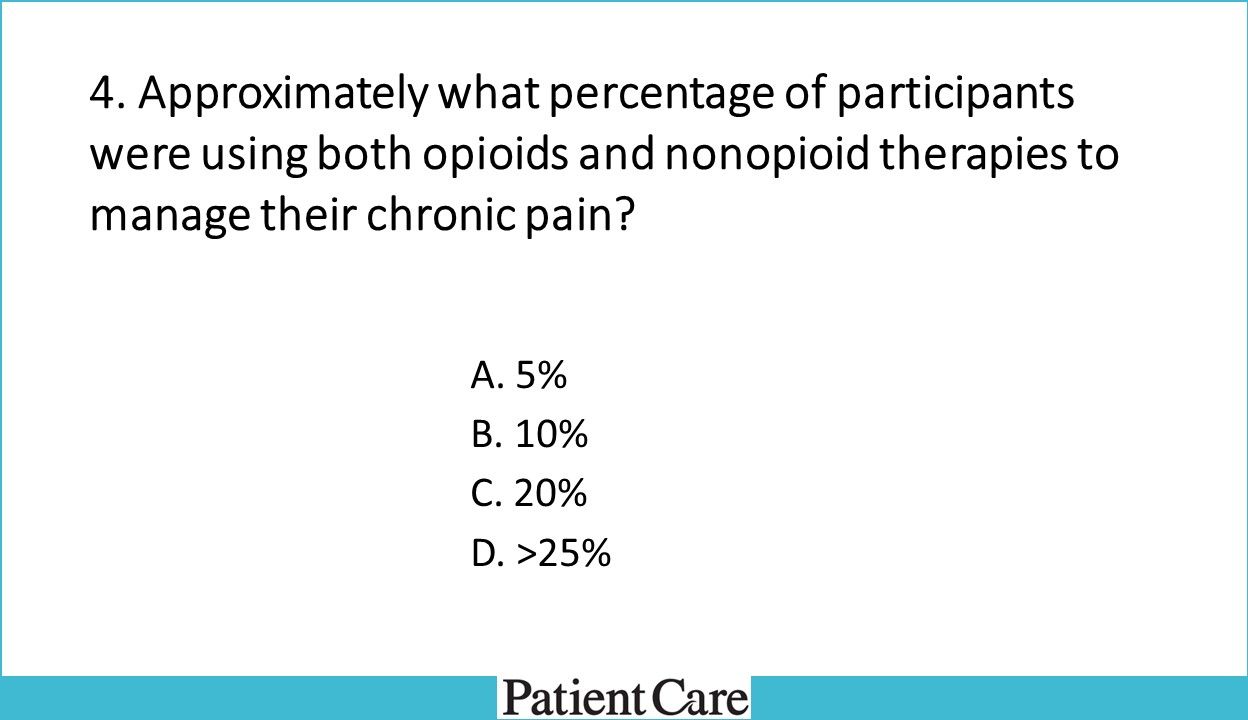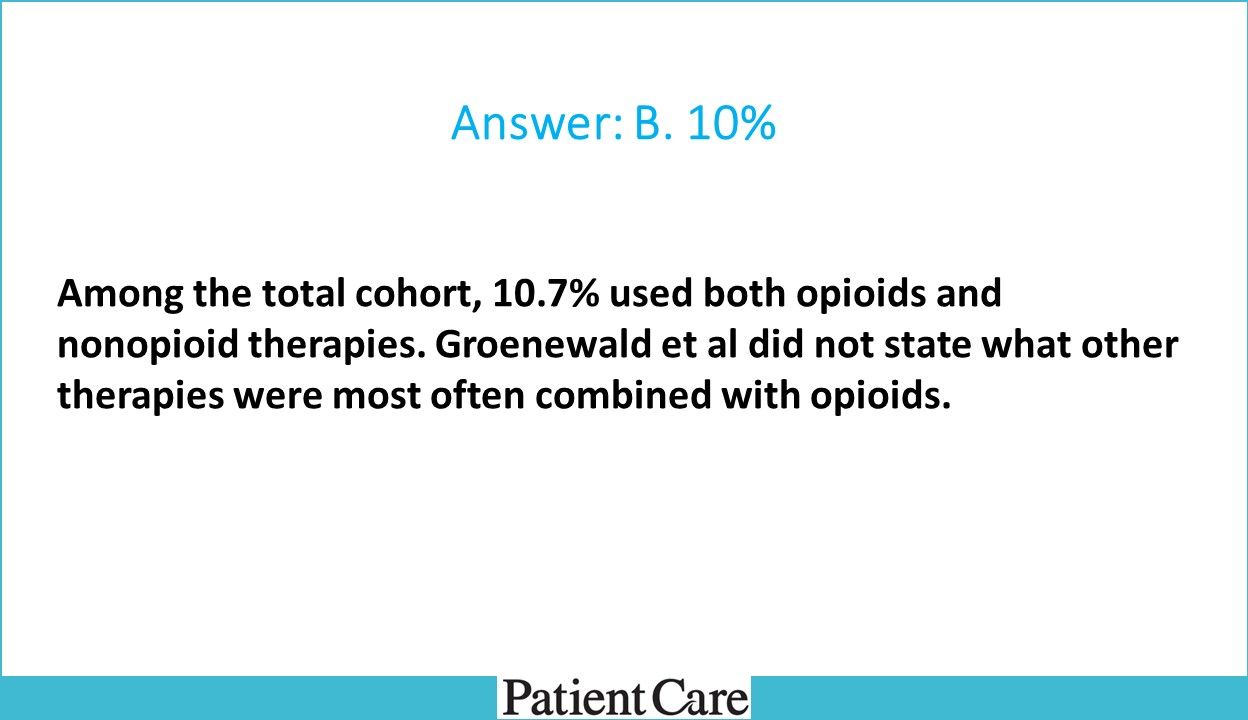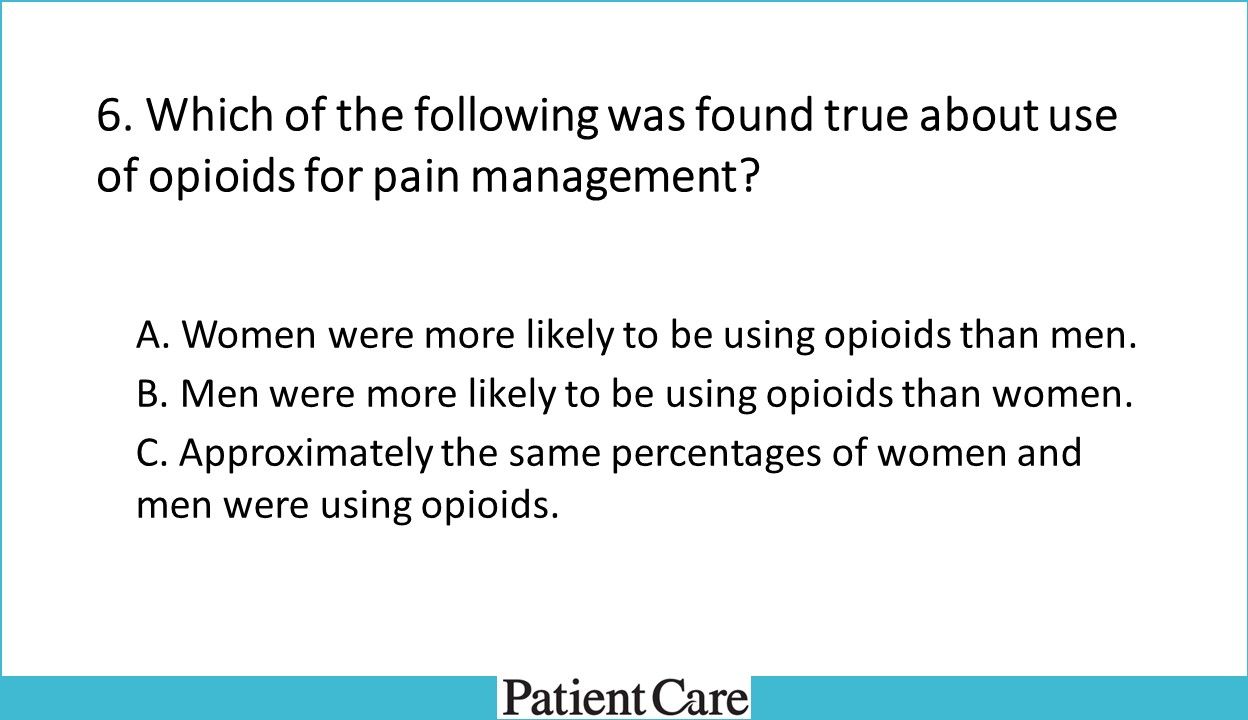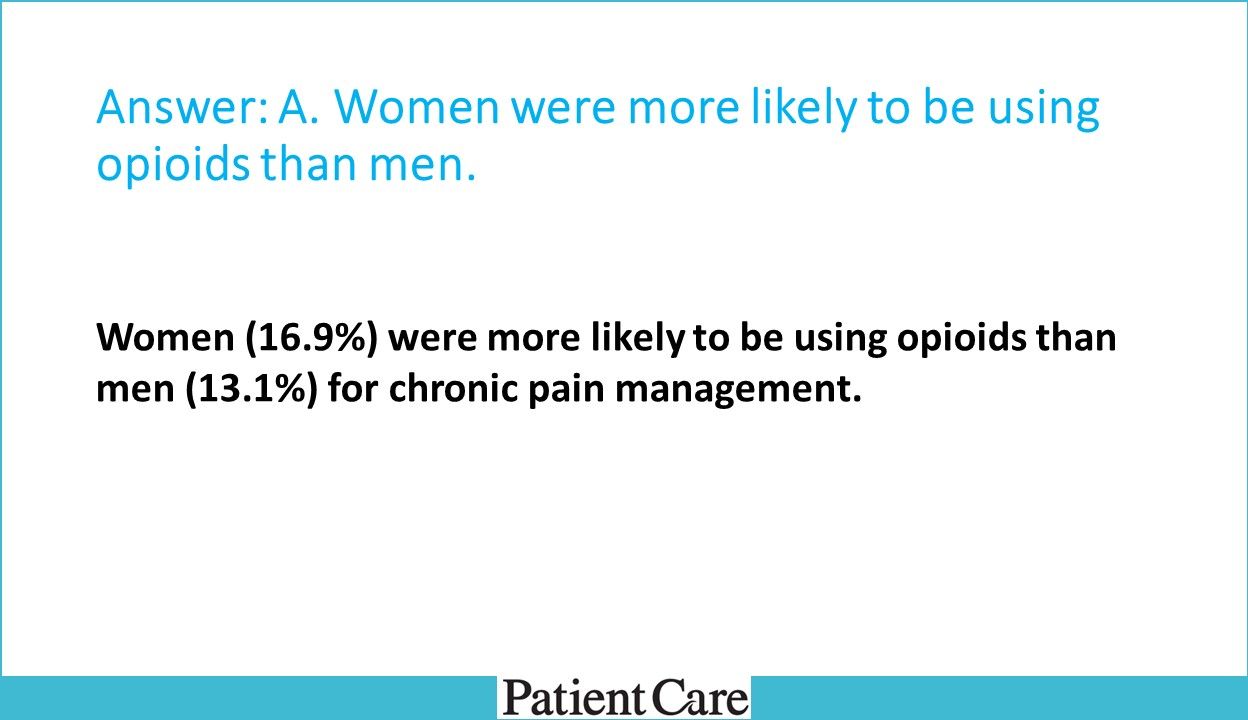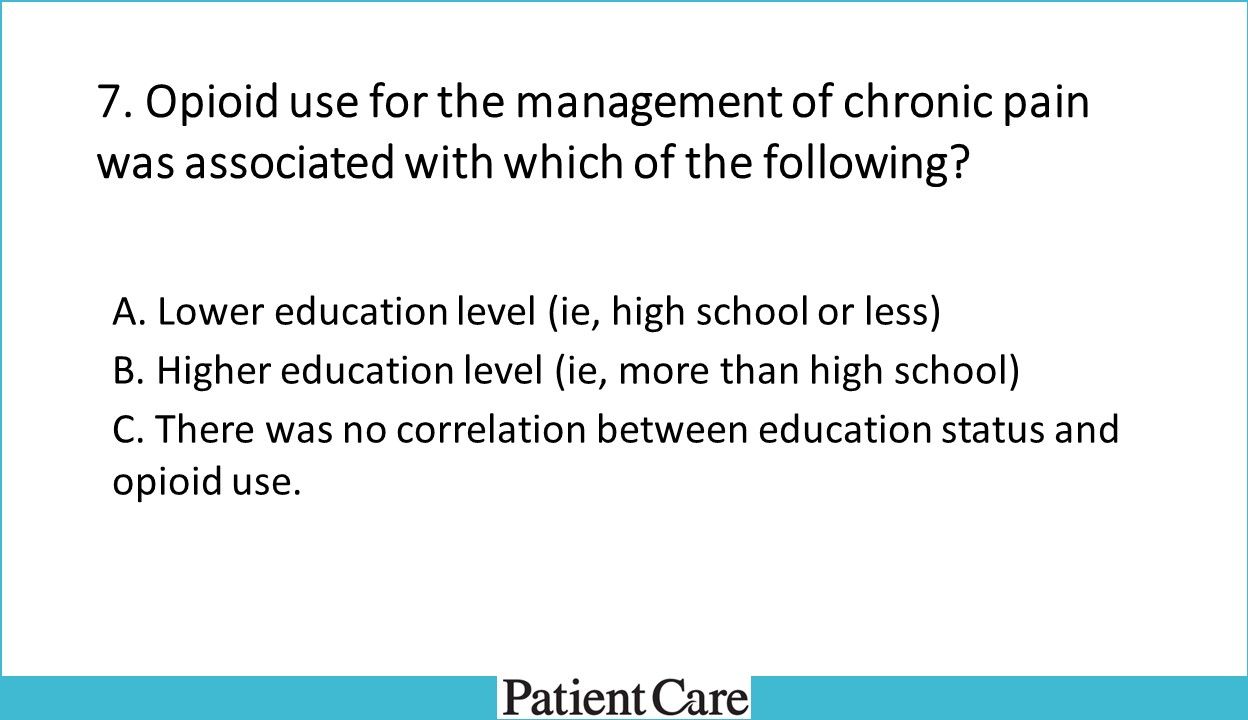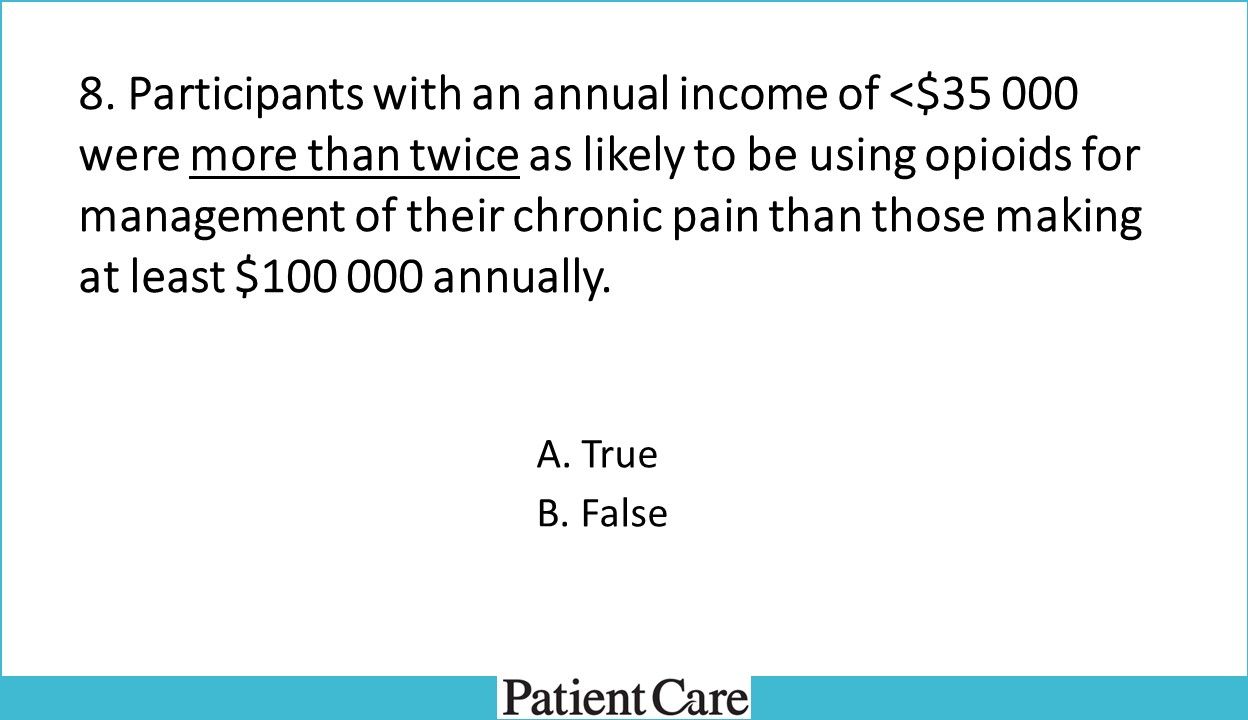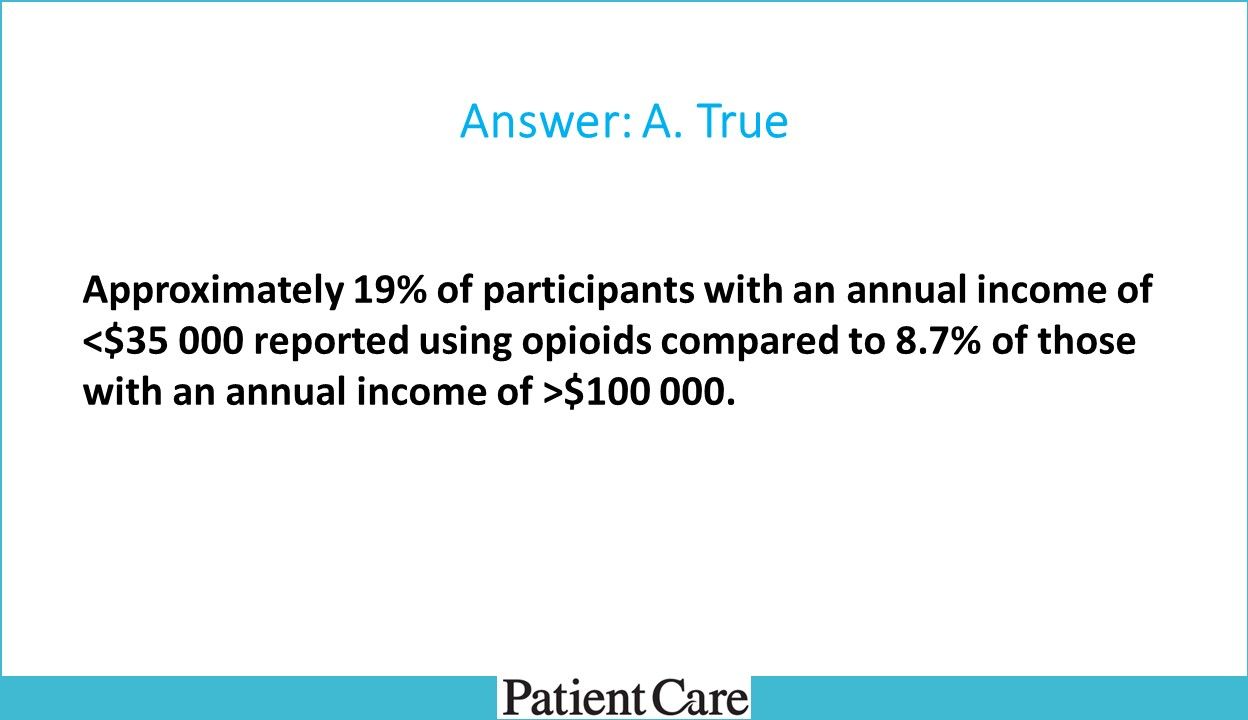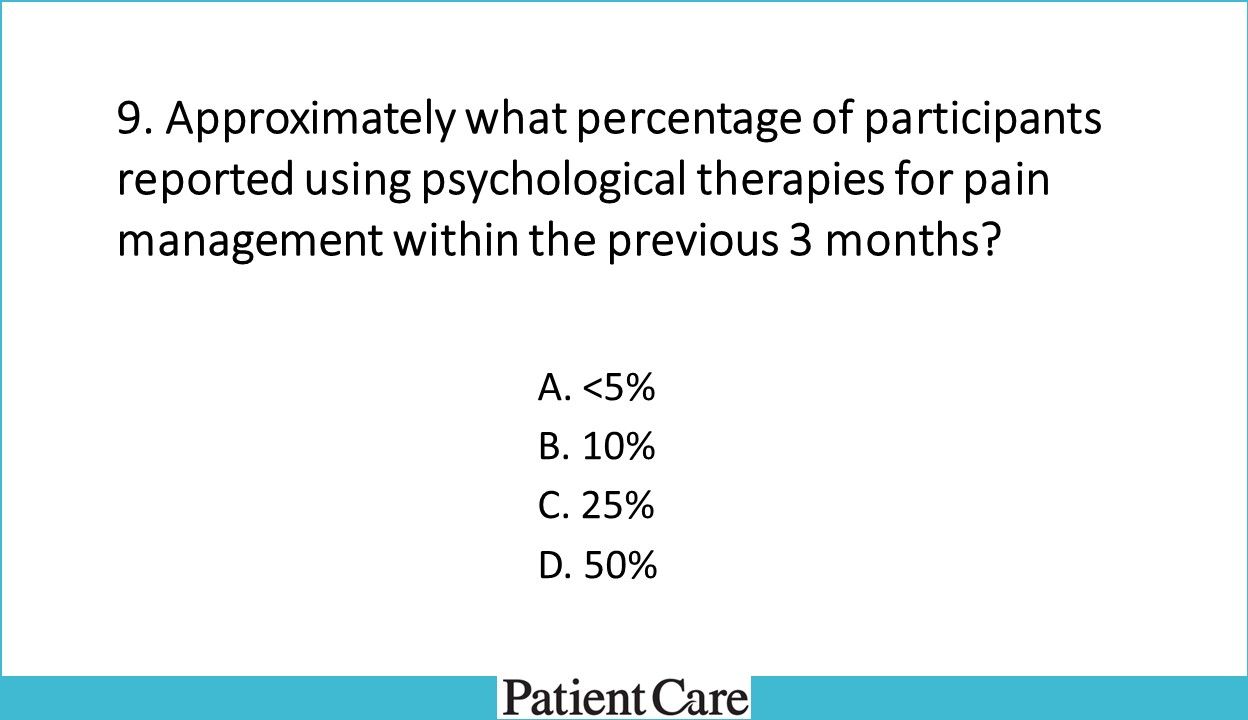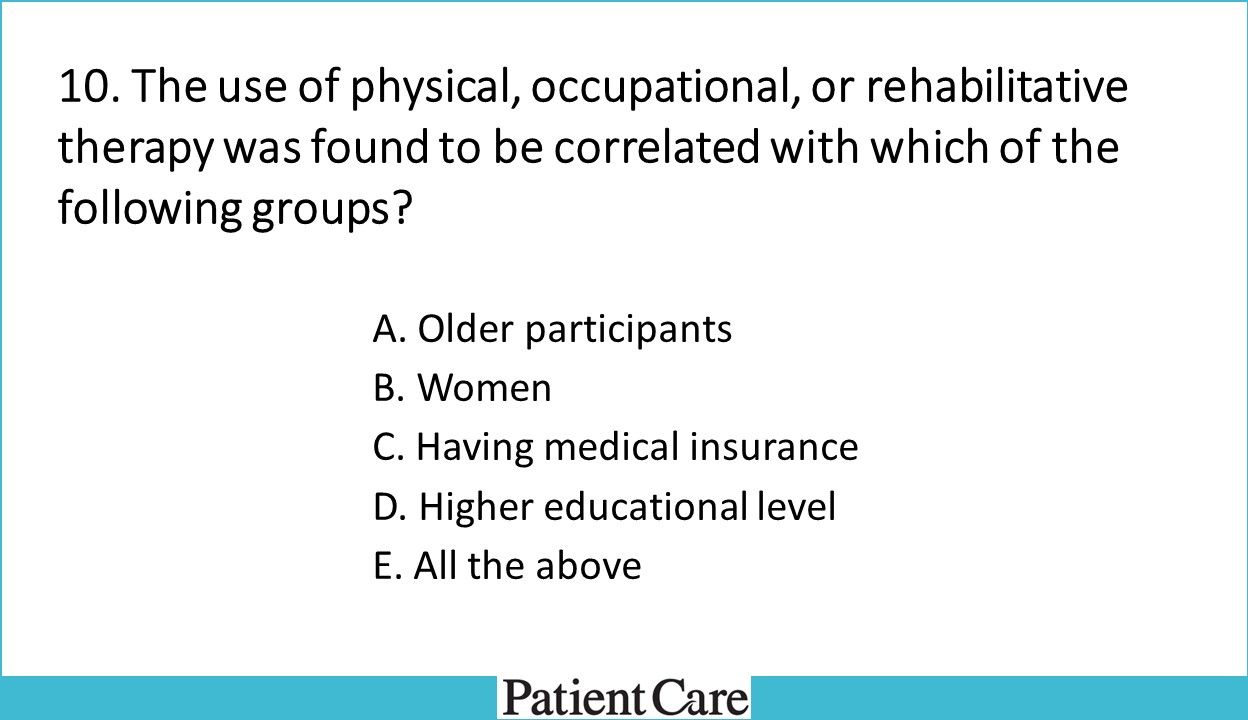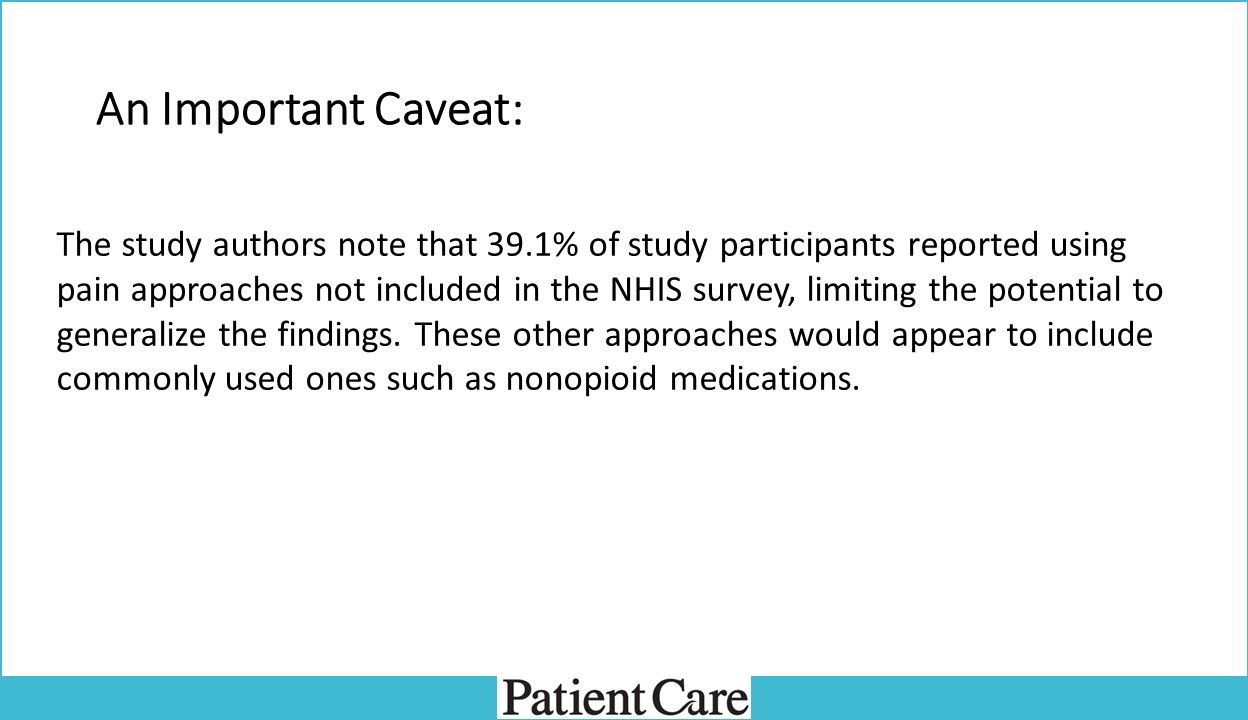The Centers for Disease Control and Prevention (CDC) used data from the 2019 National Health Interview Survey (NHIS) to estimate that over 50 million US adults suffer from chronic pain. What techniques are these adults using to manage their chronic pain? Questions on pain management techniques appeared for the first time in the 2019 NHIS, where 31 916 participants reported their use of 11 techniques during the past 3 months.
Researchers led by Cornelius Groenewald, MB, from the Department of Anesthesiology and Pain Medicine at the University of Washington in Seattle, utilized this information in a cross-sectional study published in JAMA Network Open to provide baseline information on the use of opioids and non-pharmacologic pain management techniques among adults with chronic pain. The team coded the 11 techniques into 6 categories, including opioids for chronic pain; physical, occupational, or rehabilitative therapy; psychological and psychotherapeutic therapies; and complementary therapies, such as chiropractic, massage, yoga or tai chi, and mediation.
In the slides below, find 10 questions based on the findings.
1. Approximately what percentage of participants reported not using any treatment techniques during the previous 3 months?
Answer: C. 30%. Approximately 30% of participants reported not using any pain management techniques during the previous 3 months.
2. Which of the above techniques did participants report as most commonly used?
Answer: E. Complementary therapies. Complimentary therapies, such as chiropractic, massage, yoga or tai chi, and meditation, were used by 35.4% of participants, the largest proportion of patients using any of the pain management options in the survey. The study did not include acupuncture among the options it considered complementary therapies. There was no explanation provided as to why it was omitted.
3. Approximately what percentage of participants reported only using opioid analgesics for pain management?
Answer: A. <5%. The study found that 4.4% of participants only used opioids to manage their chronic pain. Although the percentage is small, it represents over 2 million individuals who are only using a therapy for which there is essentially no research to support its use.
4. Approximately what percentage of participants were using both opioids and nonopioid therapies to manage their chronic pain?
Answer: B. 10%. Among the total cohort, 10.7% used both opioids and nonopioid therapies. Groenewald et al did not state what other therapies were most often combined with opioids.
5. True or false? Younger participants (aged 18-44 yrs) were more likely to be using opioids to manage their chronic pain than older adults (aged 45-60 yrs).
Answer: B. False. Results showed 19.3% of participants aged 45-64 yrs reported using opioids for chronic pain management compared to 8.4% of participants aged 18-44 yrs.
6. Which of the above was found true about use of opioids for pain management?
Answer: A. Women were more likely to be using opioids than men. Women (16.9%) were more likely to be using opioids than men (13.1%) for chronic pain management.
7. Opioid use for the management of chronic pain was associated with which of the above?
Answer: A. Lower education level. Seventeen percent of adults with a high school education or lower reported using opioids to manage their chronic pain compared to 13.8% of those with education higher than high school.
8. True or false? Participants with an annual income of <$35 000 were more than twice as likely to be using opioids for management of their chronic pain than those making at least $100 000 annually.
Answer: A. True. Approximately 19% of participants with an annual income of <$35 000 reported using opioids compared to 8.7% of those with an annual income of >$100 000.
9. Approximately what percentage of participants reported using psychological therapies for pain management within the previous 3 months?
Answer: A. <5%. Only 3.8% of participants reported using any psychotherapies during the previous 3 months. The study noted this number as low considering that psychotherapies, particularly cognitive behavioral therapy, has been found to be among the most effective techniques for chronic pain management.
It is notable that more study participants were using only opioids (4.4%) vs psychotherapies given the former are not indicated for chronic pain management, but the latter are. The study did not determine whether psychotherapies had been used and found ineffective or had never been tried.
10. The use of physical, occupational, or rehabilitative therapy was found to be correlated with which of the above groups?
Answer: E. All the above. Women who were older, had medical insurance, and higher education level were more likely to use physical, occupational, or rehabilitative therapies than other study participants.
The correlation with having medical insurance is understandable. It is not clear,however, whether being older, a woman, or having a higher education level is related to greater use or referral for use of these techniques.
An important caveat: The study authors note that 39.1% of study participants reported using pain approaches not included in the NHIS survey, limiting the potential to generalize the findings. These other approaches would appear to include commonly used ones such as nonopioid medications.


